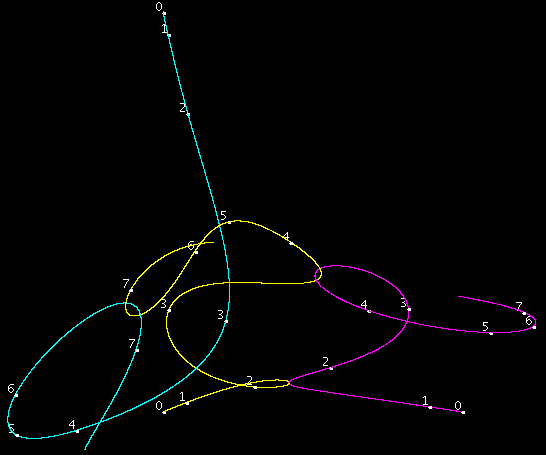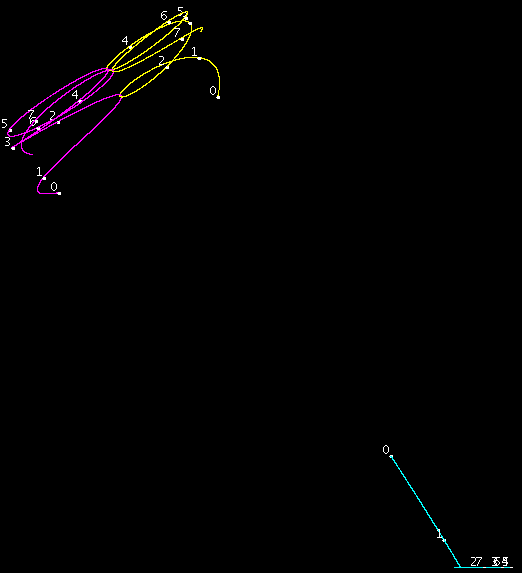Each picture is for 8 time units.
White dots on the curve are where the time has an integral value.
Labels for times 35 thru 40 are confusing.
At t = 37 and t = 38 the 5 mass (yellow) lands on the track of the 3 mass (turquois).
At t = 47 the 5 mass is just back to where it was at about t = 40.6.
The greatest numerical distress occurs about 15.7 which event is notable in the picture.
The 3 mass is off screen between t = 49 and t = 57 after which it makes its last encounter with the other two which have already begun their final perpetual pas de deux.
It passes between the other two in such a phase so as to extract enough of their potential energy to be ejected from the system.
| 0<=t<8 | 
| at t = 1.8794
ke = 2035
Δt = 4*10−7
at t = 3.8
ke = 324
Δt = 6.2*10−6
at t = 6.898
ke = 140
Δt = 1.3*10−5
|
| 8<=t<16 | 
| at t = 8.76
ke = 2341
Δt = 3.2*10−7
at t = 15.82992
ke = 48249 (Wow!)
Δt = 3.4*10−9
|
| 16<=t<24 | 
| at t = 22.965
ke = 1137
Δt = 9.3*10−7
|
| 24<=t<32 | 
| at t = 29.8015
ke = 7153
Δt = 5.9*10−8
|
| 32<=t<40 | 
| at t = 33.6715
ke = 213
Δt = 7.6*10−6
|
| 40<=t<48 | 
| at t = 41.209
ke = 619
Δt = 2.4*10−6
at t = 46.015
ke = 596
Δt = 2.5*10−6
at t = 47.371
ke = 1189
Δt = 8.7*10−7
|
| 48<=t<56 | 
| at t = 52.116
ke = 1513
Δt = 6*10−7
etc.
|
| 56<=t<62 | 
| at t = 59.777
ke = 2662
Δt = 6.2*10−8
at t = 60.6335
ke = 3067
Δt = 6.2*10−8
at t = 61.494
ke = 3126
Δt = 3.1*10−8
|







